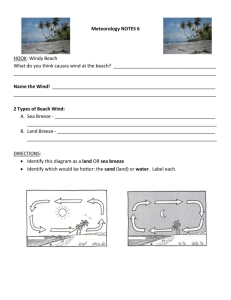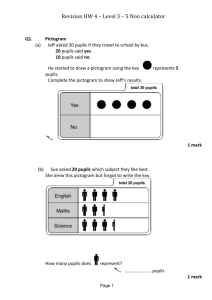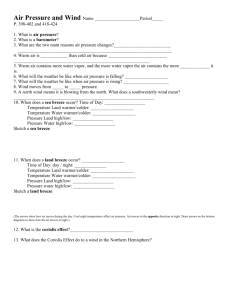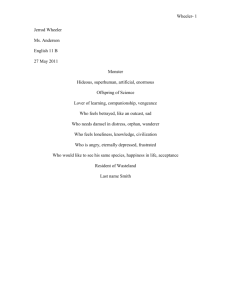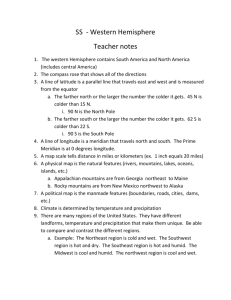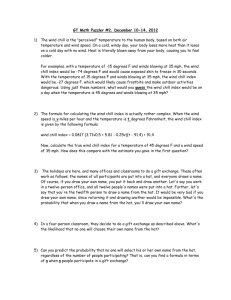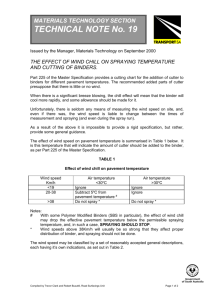`Where the wind`s like a whetted knife…`
advertisement
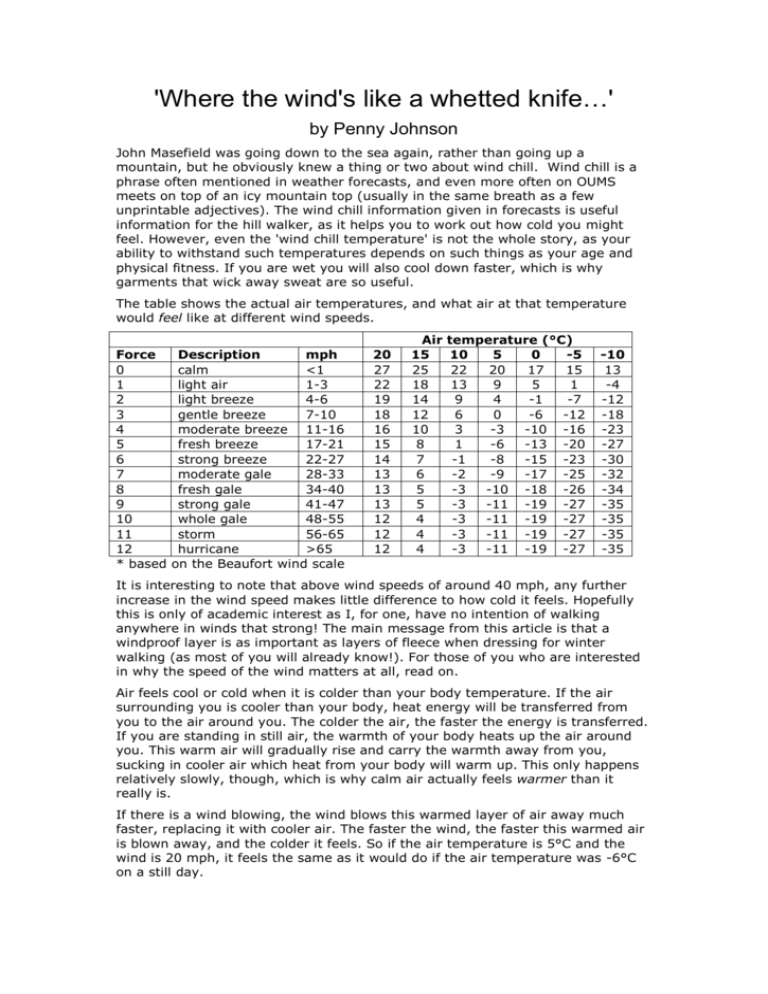
'Where the wind's like a whetted knife…' by Penny Johnson John Masefield was going down to the sea again, rather than going up a mountain, but he obviously knew a thing or two about wind chill. Wind chill is a phrase often mentioned in weather forecasts, and even more often on OUMS meets on top of an icy mountain top (usually in the same breath as a few unprintable adjectives). The wind chill information given in forecasts is useful information for the hill walker, as it helps you to work out how cold you might feel. However, even the 'wind chill temperature' is not the whole story, as your ability to withstand such temperatures depends on such things as your age and physical fitness. If you are wet you will also cool down faster, which is why garments that wick away sweat are so useful. The table shows the actual air temperatures, and what air at that temperature would feel like at different wind speeds. Force 0 1 2 3 4 5 6 7 8 9 10 11 12 * based Description mph calm <1 light air 1-3 light breeze 4-6 gentle breeze 7-10 moderate breeze 11-16 fresh breeze 17-21 strong breeze 22-27 moderate gale 28-33 fresh gale 34-40 strong gale 41-47 whole gale 48-55 storm 56-65 hurricane >65 on the Beaufort wind scale 20 27 22 19 18 16 15 14 13 13 13 12 12 12 Air 15 25 18 14 12 10 8 7 6 5 5 4 4 4 temperature (°C) 10 5 0 -5 22 20 17 15 13 9 5 1 9 4 -1 -7 6 0 -6 -12 3 -3 -10 -16 1 -6 -13 -20 -1 -8 -15 -23 -2 -9 -17 -25 -3 -10 -18 -26 -3 -11 -19 -27 -3 -11 -19 -27 -3 -11 -19 -27 -3 -11 -19 -27 -10 13 -4 -12 -18 -23 -27 -30 -32 -34 -35 -35 -35 -35 It is interesting to note that above wind speeds of around 40 mph, any further increase in the wind speed makes little difference to how cold it feels. Hopefully this is only of academic interest as I, for one, have no intention of walking anywhere in winds that strong! The main message from this article is that a windproof layer is as important as layers of fleece when dressing for winter walking (as most of you will already know!). For those of you who are interested in why the speed of the wind matters at all, read on. Air feels cool or cold when it is colder than your body temperature. If the air surrounding you is cooler than your body, heat energy will be transferred from you to the air around you. The colder the air, the faster the energy is transferred. If you are standing in still air, the warmth of your body heats up the air around you. This warm air will gradually rise and carry the warmth away from you, sucking in cooler air which heat from your body will warm up. This only happens relatively slowly, though, which is why calm air actually feels warmer than it really is. If there is a wind blowing, the wind blows this warmed layer of air away much faster, replacing it with cooler air. The faster the wind, the faster this warmed air is blown away, and the colder it feels. So if the air temperature is 5°C and the wind is 20 mph, it feels the same as it would do if the air temperature was -6°C on a still day. Wind chill does not affect how cold something will get if it is left out long enough. Your body will never get colder than the air temperature (in Britain, at least). Again, this is academic as on a winter's day you would have been dead long before your body temperature got anything like that low. A windy day only feels colder than a still day because the wind is carrying away the air around us that our bodies have warmed up, and so we cool down faster. If something like a Sigg bottle full of water starts off warmer than the air temperature it will lose heat until it reaches the same temperature of the air. It will cool down faster on a windy day, but it will never get colder than the air temperature, no matter how fast the wind*. If the temperature is 5°C and the wind is 20 mph, you might feel as if it is several degrees below zero, but the water in your bottle will not freeze. If you are interested, this website has more info. The table on it is in Fahrenheit (trust the yanks!) but there is a calculator at the bottom where you can select your units, and also a page of useful FAQs. http://www.weather.gov/om/windchill/ *not necessarily true on a rainy day, but that's another story! [And if anyone with long memories remembers seeing an article like this in the Cairn before, your memory does not deceive you! I was asked for a repeat by the new editor.]


